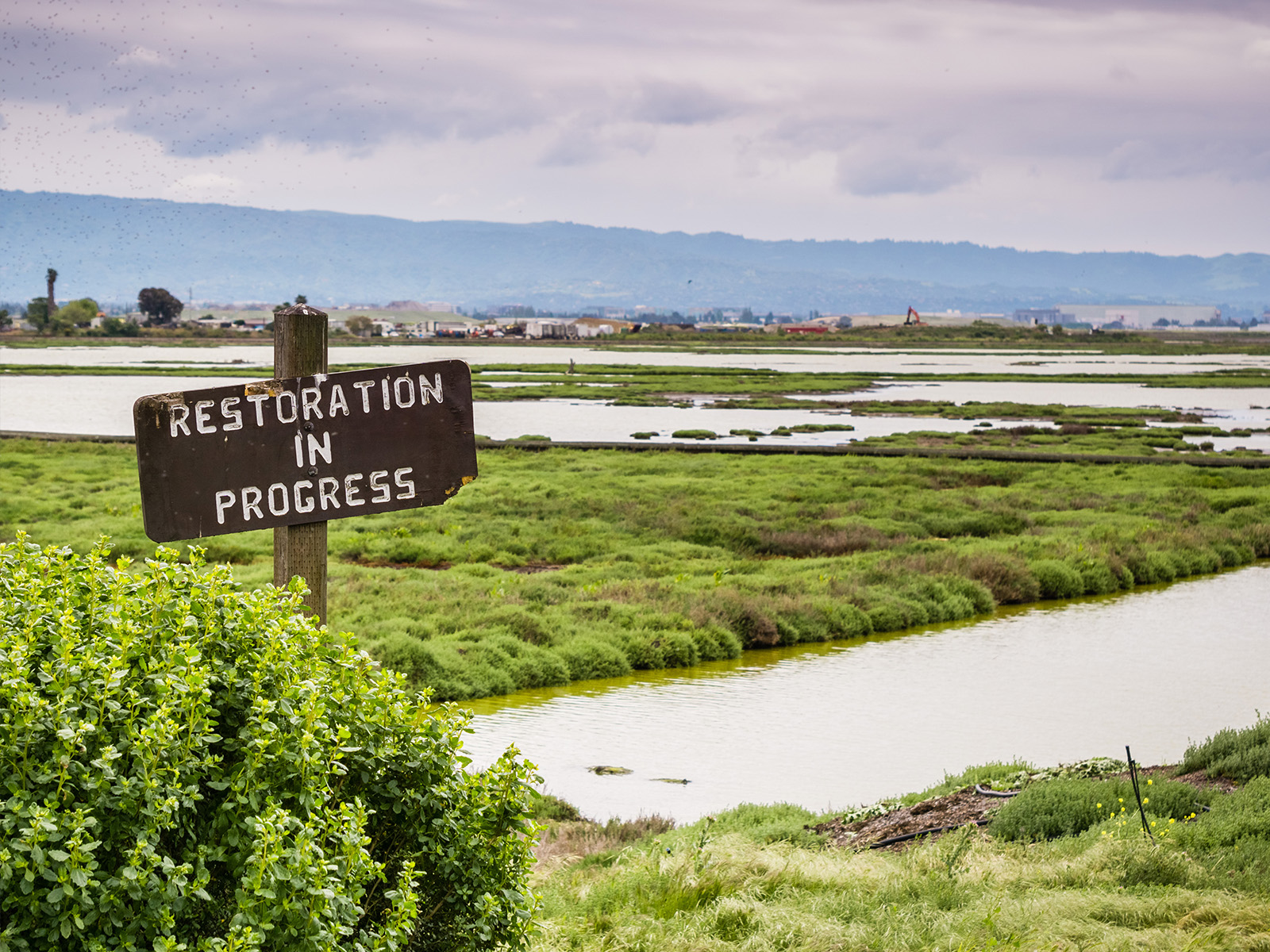When Hurricane Ida roared to shore in Louisiana last month, a system of flood gates, levees, and pumps largely kept the water out of New Orleans. Natural barriers such as wetlands, islands, and even oyster reefs also played a role by acting as "speed bumps" that damped the storm's impact.

While both natural and man-made systems have their limits, gray infrastructure-seawalls, jetties, levees-comes with high maintenance costs, can increase erosion, or may even unintentionally retain water. Incorporating green infrastructure-beaches, dunes, islands, wetlands-into flood protection plans alongside gray infrastructure can shield communities, reduce maintenance, and provide additional social and environmental benefits.
"Natural barriers offer another line of defense that can help protect infrastructure," said Katie Arkema, an Earth scientist at Pacific Northwest National Laboratory (PNNL).
But how do you put a price tag on the value of avoiding flood risk through wetland restoration, or gage the economic benefits of increased biodiversity from restoring a reef? Until now, there hasn't been comprehensive, international guidance on how to compare the costs and benefits of gray versus green infrastructure.
To address this challenge, Arkema recently co-authored a 1,000-page report outlining guidelines for natural and nature-based features for flood risk management, an international effort spearheaded by the U.S. Army Corps of Engineers.
Seawalls or seagrass-which is cheaper? It depends.
In 2005, after Hurricane Katrina left New Orleans underwater, the city upgraded its levees, flood gates and pump system, at a cost of $14.5 billion. When Ida came ashore exactly 16 years later, the new system worked.
The United States has more than 30,000 miles of levees that avert billions of dollars of damage annually. But they also come with a hefty price tag.
At 60 years old on average, many levees require expensive ongoing maintenance. They also provide a false sense of security that a levee will protect against a severe storm's impact, known as a "levee effect." And then there's the loss of habitat from building them in the first place.
"Natural systems can actually help protect our gray infrastructure investments," - Katie Arkema, PNNL Earth scientist
"The goal is to use nature-based approaches when possible, and we don't want to destroy wetlands to build more seawalls. In fact, natural systems can actually help protect our gray infrastructure investments," said Arkema.
For example, research from the Gulf of Mexico shows that green infrastructure can avert 40% of coastal risk associated with climate change, land subsidence, and coastal development. And in terms of damage avoided from flooding, wetlands and local levees offer roughly the same amount of protection. Yet, restoration costs roughly one-tenth of what a local levee does. Plus, the benefits go beyond physical protection-wetlands also absorb atmospheric carbon or provide nursery grounds for young salmon.
Stacked with gray infrastructure, those are pretty good odds.
"It still takes resources to restore ecosystems. But there aren't the same maintenance costs as traditional gray infrastructure often requires," said Arkema. "Natural systems also provide benefits, including economic value, through things like increased fisheries, property value, tourism, or recreation."
A case for going green

After Superstorm Sandy slammed into New York and devastated Staten Island, the state allocated $60 million for the Living Breakwaters project to restore oyster reefs that once protected the area. Reefs dampen wave energy while providing habitat for marine life.
From an economic standpoint, oyster reef restoration prevents twice the damage from storms, yet costs five times less than elevating homes-a common approach in the Gulf and the Atlantic seaboard. That doesn't even account for benefits that are tough to put a price tag on, like biodiversity or societal well-being.
"People don't just want to be protected from flooding, they also want catch fish, walk on the beach, or enjoy a great view. These are benefits we may not get from gray infrastructure," said Arkema.
Examples like the Living Breakwaters project are happening across the country: Louisiana alone is spending $1 billion on coastal restoration.
Weighing trade-offs
There isn't a one-size-fits-all solution for flood protection, and strategies depend on project cost, how urgently it is needed, the number of people at risk, and whether things like biodiversity or tourism are a priority.
"If we build new infrastructure to protect communities from flooding, do we go green or do we go gray? Or do we do some combination of both?" said Arkema. "Those are the questions facing many communities right now."
Maintenance costs for gray infrastructure may be higher, but the trade-off is that natural systems often need more time to be fully functional.
With 40% of the U.S. population living in coastal areas and climate-change-related extreme events expected to increase, engineers and planners will continue to grapple with the balance of green and gray.
This work was supported by the U.S. Army Corps of Engineers. The International Guidelines on Natural and Nature-Based Features for Flood Risk Management were released in September 2021.






